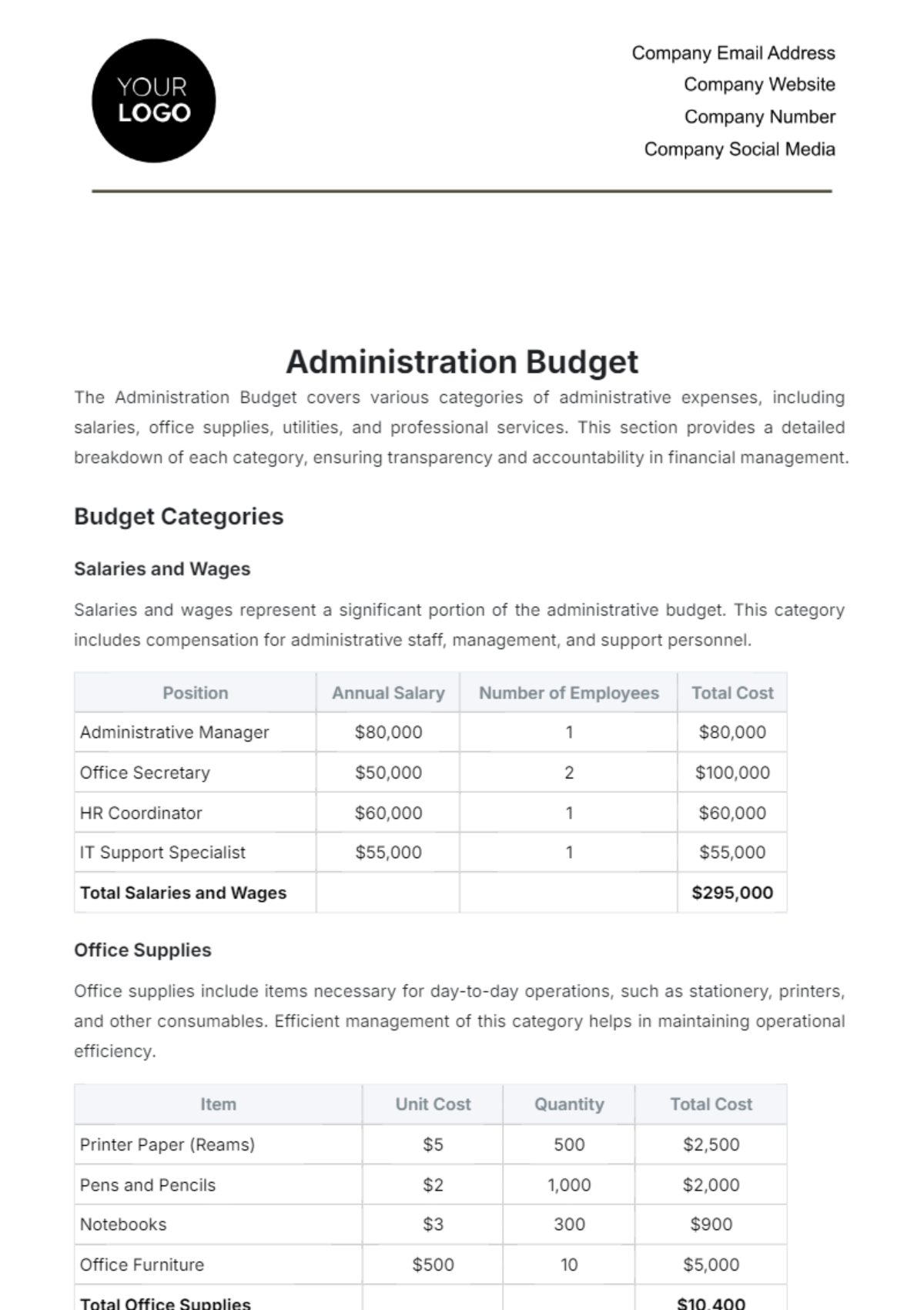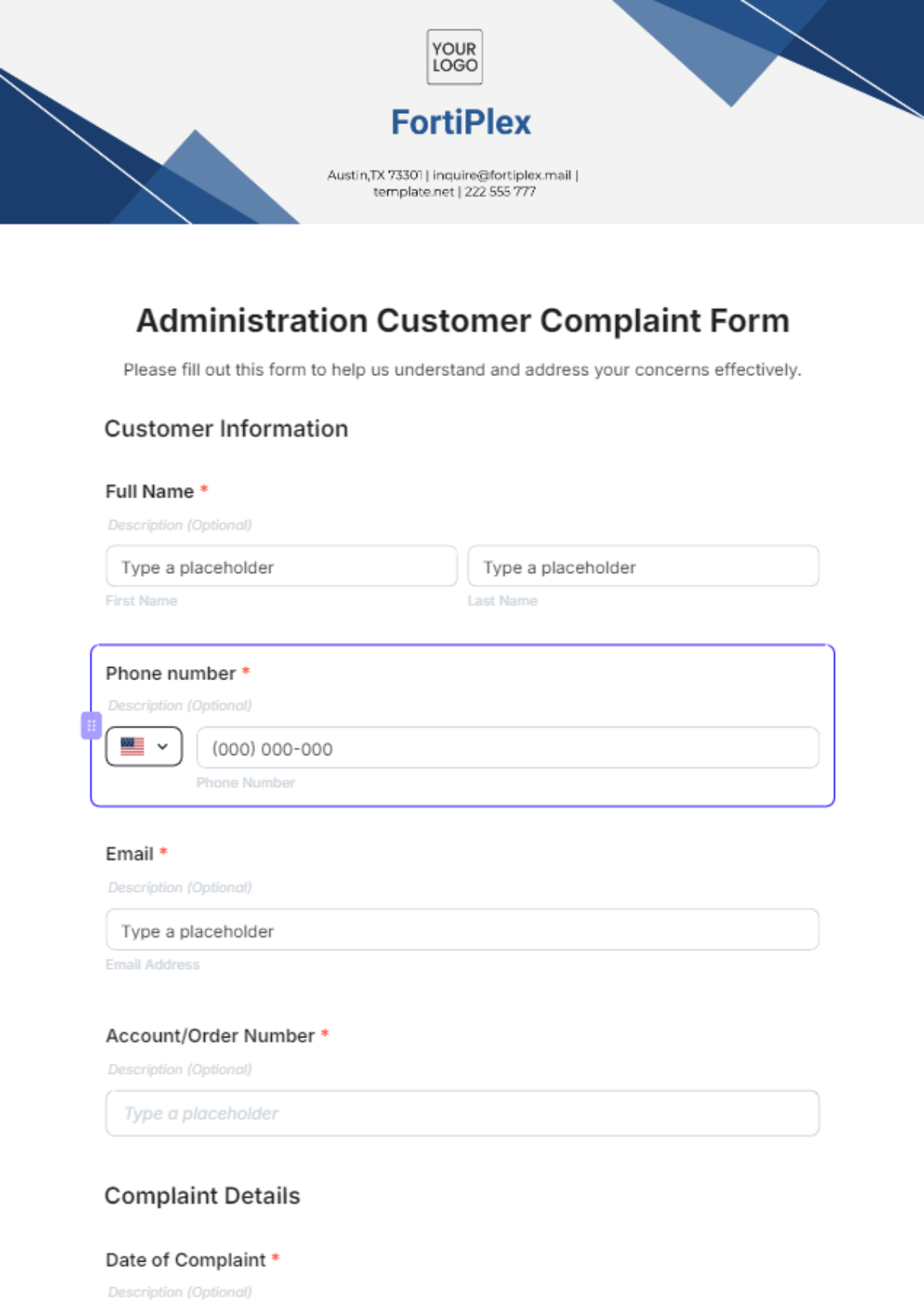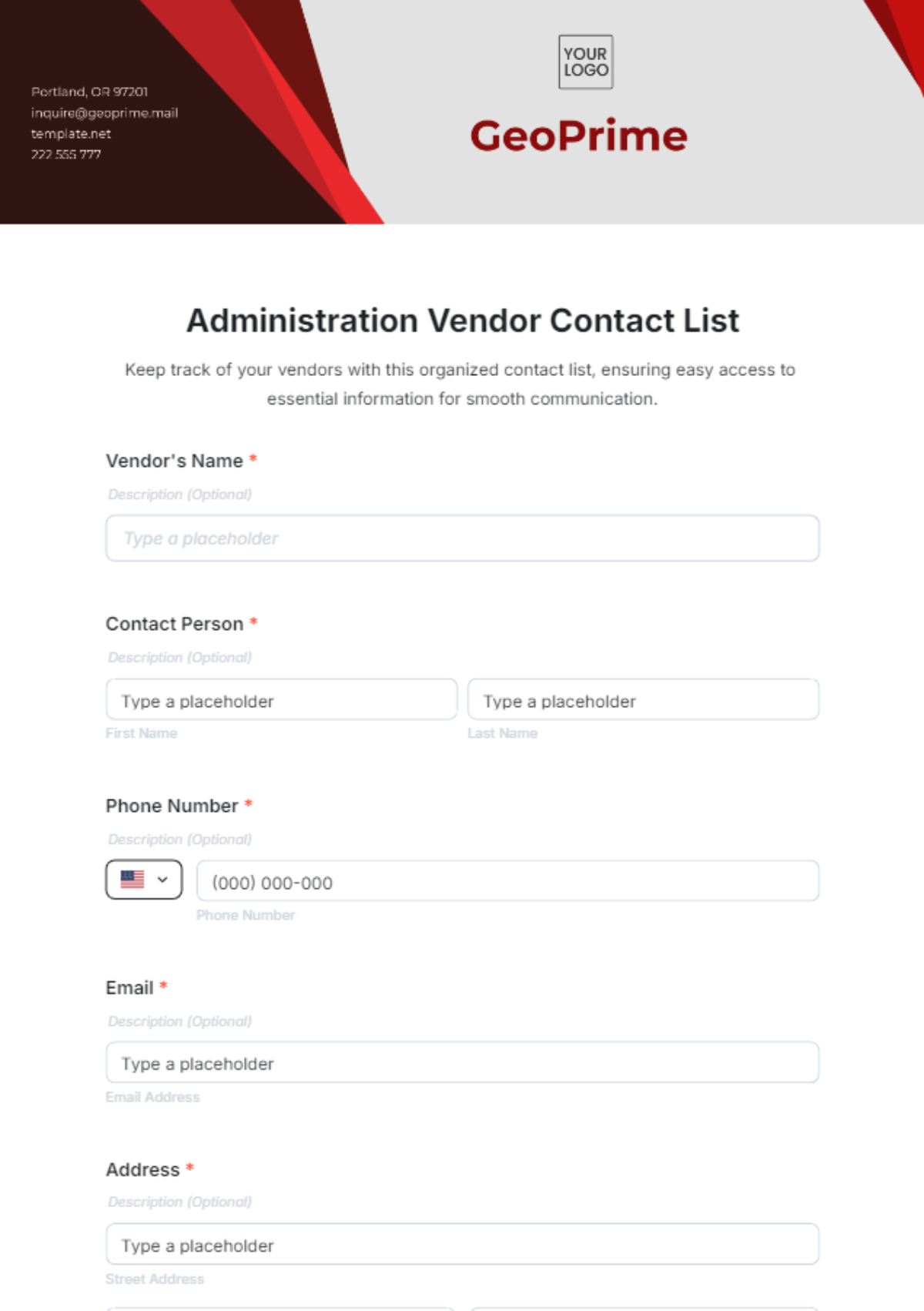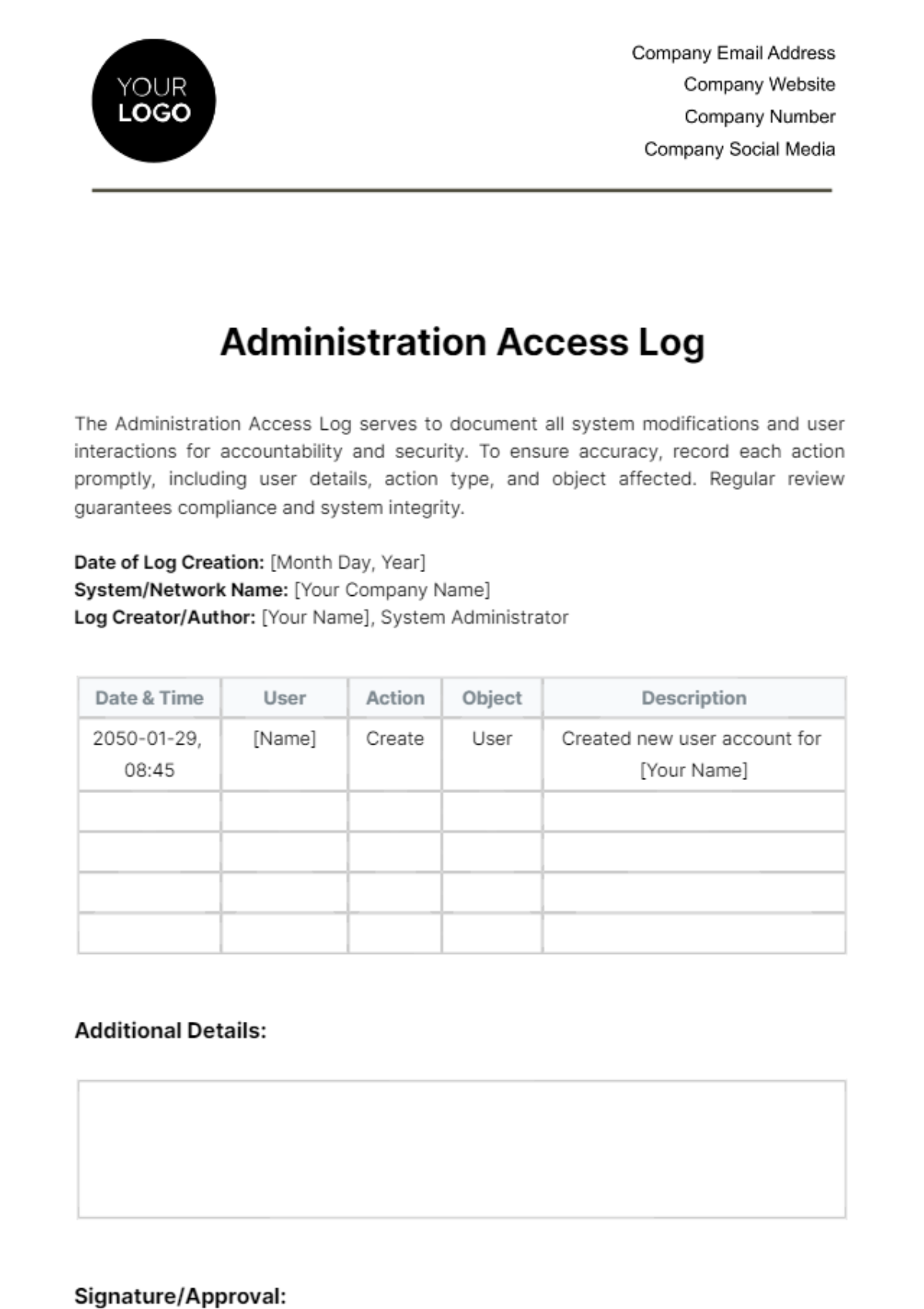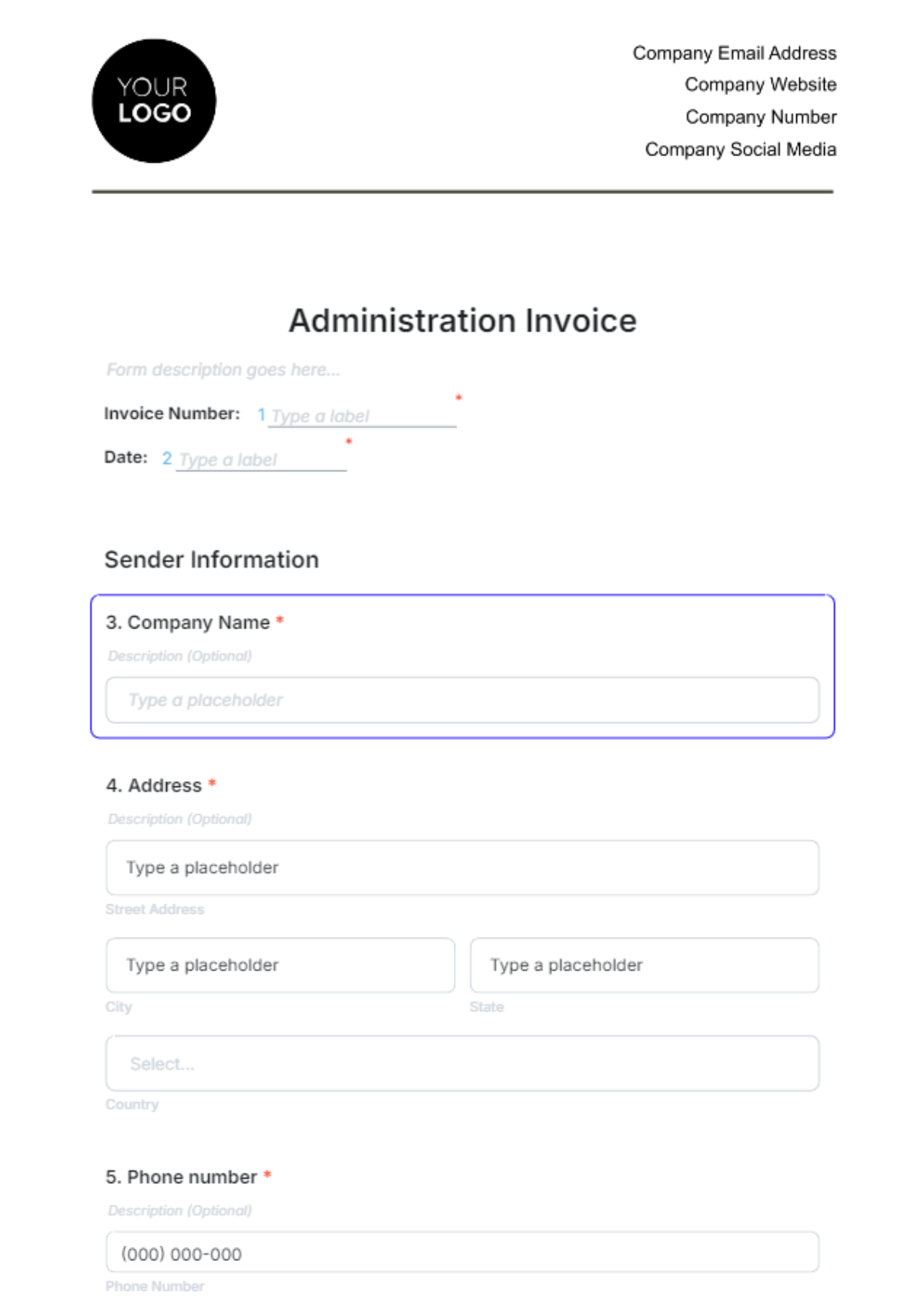Free Administration Digital Transformation Feasibility Study Template
I. Introduction
The digital landscape is evolving rapidly, necessitating a strategic approach to integrating technology into our operations. This Administration Digital Transformation Feasibility Study aims to assess the viability of adopting advanced digital solutions to enhance our organizational efficiency, customer service, and competitive edge. By evaluating our current operational framework and identifying opportunities for digital innovation, we embark on a journey to redefine our processes and ensure sustainable growth.
II. Current State Analysis
A. Current Operational Processes
Our organization operates a comprehensive suite of processes that encompass customer relationship management, supply chain logistics, human resources, and financial operations. These processes are critical to our day-to-day operations and overall success:
Customer inquiries and support
Order processing and fulfillment
Inventory management
Employee recruitment and onboarding
Financial reporting and budgeting
B. Current Digital Tech Use
The use of digital technology within our operations varies significantly across departments. The table below provides a qualitative and quantitative assessment of current digital technology utilization:
Process | Qualitative Assessment | Quantitative Assessment |
Customer Support | Moderately effective; relies on manual entry and tracking | 60% digital, 40% manual processes |
Order Processing | Highly effective; automated systems in place but lacks integration with inventory | 80% digital, 20% manual processes |
Inventory Management | Inefficient; minimal digital tools, predominantly manual stock checks | 30% digital, 70% manual processes |
Recruitment & Onboarding | Moderately effective; digital applications but manual review and processing | 50% digital, 50% manual processes |
Financial Reporting | Highly effective; fully digitalized and automated reporting systems | 90% digital, 10% manual processes |
C. Gaps in Current State
Our analysis reveals several gaps and inefficiencies in our current operational processes. Despite some areas of high digital utilization, such as financial reporting, other critical processes like inventory management are predominantly manual, leading to inefficiencies and increased error rates. The lack of integration between digital systems, especially between order processing and inventory management, results in operational delays and compromises our ability to respond swiftly to customer demands. Additionally, the manual aspects of customer support and recruitment processes reduce our operational efficiency and impact the overall customer and employee experience. Addressing these gaps through a comprehensive digital transformation strategy is imperative to achieving operational excellence and maintaining our competitive position in the market.
III. Market and Industry Analysis
A. Digital Trends in the Industry
The digital transformation landscape within our industry is characterized by rapid technological advancements and a growing emphasis on customer-centric approaches. Key trends include:
Automation of routine tasks to increase efficiency and reduce human error.
Use of data analytics to drive decision-making and personalize customer experiences.
Adoption of cloud computing for scalable and flexible IT infrastructure.
Implementation of artificial intelligence (AI) and machine learning (ML) for enhanced predictive analytics and customer service.
B. Competitive Analysis
Our competitors are increasingly integrating digital technologies into their operations to enhance efficiency, improve customer service, and innovate product offerings. The table below compares our digital adoption level with key competitors:
Competitor | Digital Adoption Level | Key Technologies Used | Impact on Market Position |
Competitor A | High | AI, cloud computing, big data | Strong market presence and customer satisfaction |
Competitor B | Moderate | E-commerce platforms, CRM systems | Growing market share, improving customer engagement |
Our Organization | Moderate | Automated financial reporting, basic CRM | Stable market position but at risk of falling behind in innovation |
C. Regulatory Considerations
The digital transformation journey is not only about technology adoption but also compliance with legal and regulatory frameworks to ensure data protection, privacy, and cybersecurity. Relevant US laws include:
General Data Protection Regulation (GDPR) for handling of personal data of EU citizens.
Health Insurance Portability and Accountability Act (HIPAA) for organizations dealing with health information.
Federal Information Security Management Act (FISMA) for federal agencies' information security management.
California Consumer Privacy Act (CCPA) for consumer data privacy rights.
IV. Technology Assessment
A. Evaluation of Suitability
To align our digital transformation goals with the latest technological advancements, we evaluated several digital technologies for their potential impact and suitability. The evaluation table below summarizes our findings:
Technology | Potential Impact | Suitability for Organization | Implementation Complexity |
Cloud Computing | High | High | Moderate |
Data Analytics | High | High | High |
AI and ML | High | Moderate | High |
Blockchain | Moderate | Low | High |
IoT | Moderate | Moderate | Moderate |
B. Analysis of Tech Integration
Integrating new digital technologies with our existing systems presents both opportunities and challenges. While technologies like cloud computing and data analytics can seamlessly integrate with our current infrastructure, others like AI and ML may require substantial modifications to existing workflows and systems. A strategic approach, prioritizing technologies that offer the most immediate benefits with the least disruption, is essential for a smooth transition.
C. Organizational Readiness
Our assessment indicates a moderate level of readiness for adopting new digital technologies. While there is a solid foundation in some areas, such as a willingness to innovate and a basic IT infrastructure, significant gaps exist in skills, culture, and processes. To successfully embrace digital transformation, we must invest in training, foster a culture of continuous improvement, and streamline our processes to support the integration of new technologies. This readiness assessment underscores the need for a comprehensive strategy that addresses not only technological but also organizational and cultural shifts.
V. Risk Analysis
Implementing a digital transformation strategy involves various risks that need to be identified, assessed, and mitigated to ensure the successful adoption of new technologies and processes. The following table outlines key risks, their likelihood, potential impact on our organization, and strategies for mitigation:
Risk | Likelihood | Impact | Mitigation Strategies |
Technology adoption failure | Medium | High | Implement pilot projects, provide adequate training, and ensure top management support. |
Cybersecurity threats | High | High | Invest in robust security measures, conduct regular security audits, and establish incident response protocols. |
Regulatory compliance issues | Medium | High | Stay updated on relevant laws, consult legal experts, and integrate compliance checks into digital systems. |
Overbudget and project delays | High | Medium | Use project management tools, set realistic timelines, and maintain a contingency budget. |
Resistance to change | High | Medium | Engage employees early, communicate benefits clearly, and provide support throughout the transition. |
VI. Financial Analysis
A. Cost Estimates
The financial investment required for our digital transformation initiative includes costs for new technology acquisition, system integration, training, and potential operational disruptions during the transition period. The table below provides an estimated breakdown of these costs:
Cost Category | Estimated Cost |
Technology Acquisition | $500,000 |
System Integration | $250,000 |
Training and Development | $150,000 |
Operational Disruption | $100,000 |
Total Estimated Cost | $1,000,000 |
B. Financial Benefits
The anticipated financial benefits from our digital transformation include increased operational efficiency, higher customer satisfaction leading to increased sales, and reduced long-term operational costs. The table below summarizes these benefits:
Benefit Category | Estimated Annual Benefit |
Operational Efficiency Gains | $300,000 |
Increased Sales | $200,000 |
Reduced Operational Costs | $150,000 |
Total Annual Benefits | $650,000 |
C. ROI Analysis
The return on investment (ROI) analysis compares the total estimated costs of our digital transformation initiative against the anticipated financial benefits. Assuming a steady realization of benefits over the next few years, we estimate an ROI as follows:
ROI = (Total Annual Benefits * Years - Total Estimated Cost) / Total Estimated Cost
Considering the figures outlined in the Cost Estimates and Financial Benefits sections, the ROI over a three-year period can be calculated to assess the financial viability of the digital transformation project. This analysis will help us make informed decisions regarding the allocation of resources and the prioritization of initiatives within our digital transformation strategy.
VII. Implementation Roadmap
To ensure the successful rollout of our digital transformation initiative, a detailed implementation roadmap has been developed. This roadmap outlines the critical steps, timelines, and responsibilities necessary to achieve our digital transformation objectives effectively.
Step | Timeline | Responsibility |
Technology Selection | Q1 | IT Department |
System Integration Planning | Q2 | IT Department & Vendors |
Training Program Development | Q3 | HR Department |
Pilot Testing | Q4 | IT Department & Selected Departments |
Full Implementation | Q1-Q2 | IT Department & All Departments |
Ongoing Support & Maintenance | Q3 | IT Department |
VIII. Evaluation and Monitoring Plan
A. KPIs
Key performance indicators (KPIs) are essential for measuring the success of our digital transformation efforts. The table below outlines the KPIs with their target values:
KPI | Target Value |
System Uptime | 99.9% |
Customer Satisfaction Score | 85% |
Employee Productivity Increase | 25% |
Reduction in Operational Costs | 20% |
Increase in Digital Sales | 30% |
B. Feedback Mechanisms
To continuously improve our digital transformation process, we will implement several feedback mechanisms:
Employee surveys to assess the usability and effectiveness of new technologies.
Customer feedback forms on our digital platforms to gauge satisfaction.
Suggestion boxes for innovative ideas on digital tools and processes.
C. Regular Review and Adjustment
The digital transformation initiative will undergo regular reviews to assess progress against KPIs and to incorporate feedback from stakeholders. These reviews will occur quarterly. Adjustments to the strategy or implementation plan will be made as necessary, based on the insights gained from these reviews.
IX. Conclusion
In conclusion, this Administration Digital Transformation Feasibility Study has laid out a comprehensive roadmap for integrating cutting-edge digital technologies into our operational processes. Through careful planning, risk management, and financial analysis, we have identified a clear path forward that promises to enhance operational efficiency, improve customer satisfaction, and secure a competitive advantage in our industry. The implementation roadmap and evaluation plan ensure that we have a structured approach to achieving our digital transformation objectives, with mechanisms in place to monitor progress and adapt to challenges. As we embark on this transformative journey, we are committed to continuous improvement and innovation to meet the evolving needs of our customers and stakeholders.

